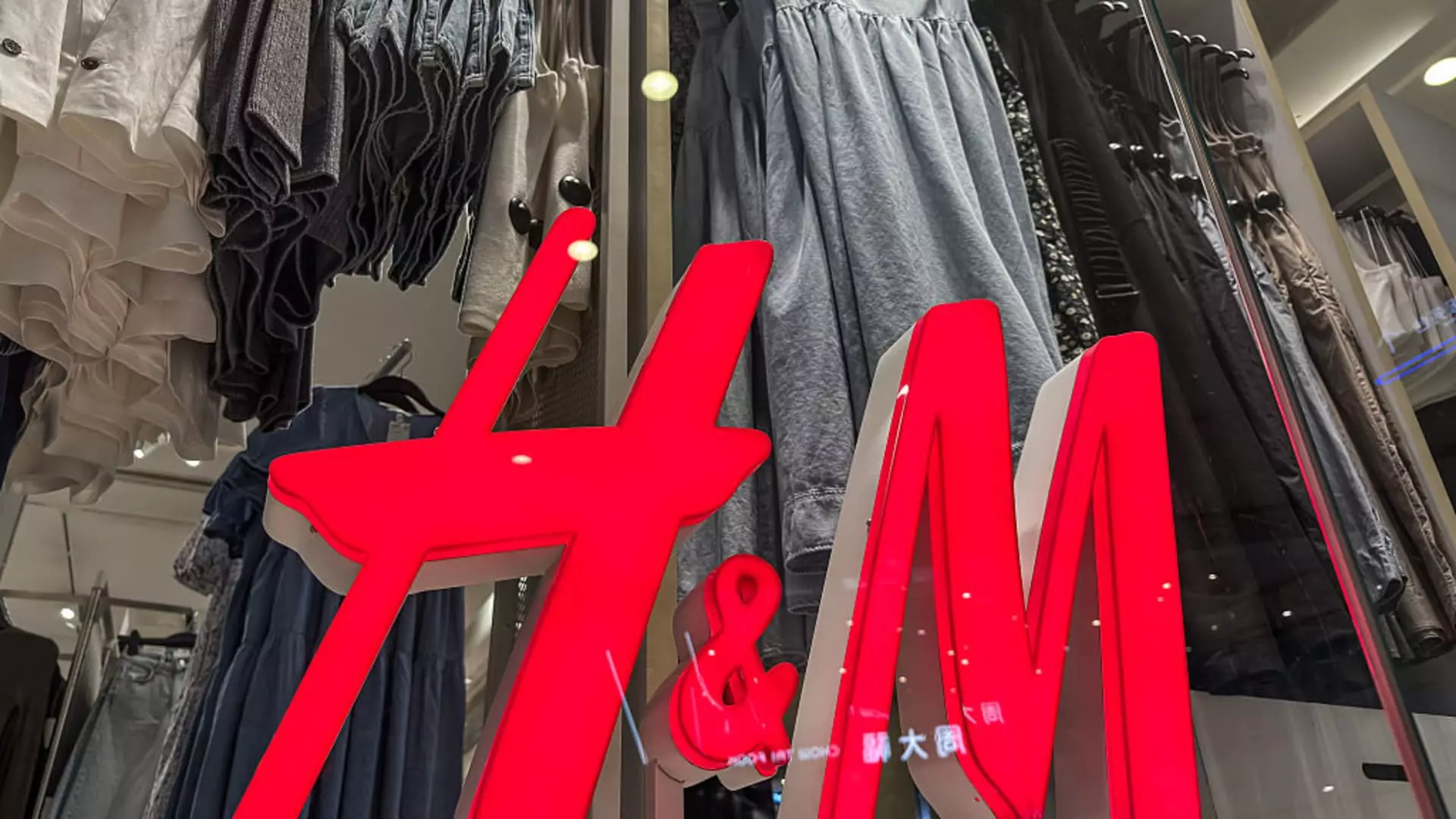The retail landscape has recently been a battlefield for giants, with H&M finding itself in a precarious situation. As one of the largest clothing retailers in the world, H&M’s attempts to revive its sluggish sales are indicative of broader challenges facing the industry. The reported 3% increase in sales for June, compared to a slow start to the year, sounds promising on paper. However, a deeper look reveals a company navigating turbulent financial waters where consumer confidence hangs by a thread. The modest improvement in sales, as reported by CEO Daniel Erver, points to a fragile uptick amidst an overall backdrop of declining revenues, particularly with a year-on-year drop to around $5.99 billion for the fiscal second quarter.
In a time where discretionary spending is evidently on the chopping block, H&M has discovered that consumers are not only cautious but are increasingly sensitive to pricing. This reality suggests that the company’s strategies may need more than just a glimmer of good news to sustain any recovery. With competitors like Zara and emerging fast-fashion retailers like Shein and Temu vying for market share, H&M’s once-commanding lead seems to be eroding, raising questions about its long-term viability amid such fierce competition.
The Tariff Tangle
As if declining sales weren’t enough, H&M’s vulnerability has been exacerbated by the looming U.S. trade tariffs. What traditionally might have been an annoying external trigger for price adjustments has now become a critical factor in how H&M navigates the storm. While the brand emphasizes its proactive stance, claiming to be closely monitoring developments, these tariffs are a tangible reminder of global interdependencies that can severely affect local markets.
H&M executives have sheepishly acknowledged the tough decisions ahead, including the possibility of price hikes to counter rising production costs. Such potential increases could alienate price-sensitive consumers even further, exacerbating the struggle to attract shoppers who are already living in a world filled with economic uncertainty. As Erver notes, the recent history of increasing prices among competitors warrants attentiveness, suggesting that H&M is grasping for any strategic advantage it can find. However, the real danger lies not just in pricing strategies but also in whether these adjustments will prove sufficient to attract customers enough to fill stores that may otherwise stand empty.
Store Closures: A Reflective Moment
Anticipating the future, H&M has flagged plans to shutter an eye-watering 200 stores by 2025 while simultaneously opening 80 new locations primarily in emerging markets. This strategy hints at a larger narrative playing out: a shift in focus from established markets to regions with seemingly better growth potential. However, one cannot help but wonder: is this merely a reactive measure to shifting consumer behavior, or does it reflect an inability to forge a strong brand presence in more competitive retail landscapes?
By narrowing its footprint in more saturated markets, H&M risks losing the very brand identity it has spent decades cultivating. As the competition stiffens, these decisions may reveal whether the brand’s essence can survive when faced with the necessity to adapt. The dichotomy of store closings and openings raises critical questions about how well H&M understands its core customers and their evolving buying habits, especially at a time when sustainability and ethical sourcing are increasingly at the forefront of consumer concerns.
The Path Ahead
While it is easy to point fingers at external economic conditions, H&M finds itself at a critical point of self-reflection regarding its operational efficiency. The turbulence of the market should serve as a lesson in adaptability rather than merely a hurdle. A reevaluation of their business model, marketing strategies, and product offerings may well be necessary if it desires to break free from the constraints of being just another fast-fashion retailer in an oversaturated market.
The financial struggle experienced by H&M is emblematic of the larger retail ecosystem’s uncertainties—one that is demanding innovation, resilience, and above all, a consumer-centric approach. The path ahead for H&M involves not simply weathering the storm but needing to forge a lasting connection with customers who have plenty of alternatives at their fingertips. Only time will reveal whether H&M can navigate these choppy waters effectively and restore its once-stellar reputation in the global retail arena or become yet another cautionary tale in the annals of corporate history.

